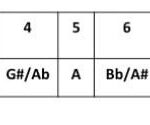Recently, I was reminded of the power of innovative guitar playing after seeing Robert Fripp of King Crimson live, alongside the incredible Tony Levin on bass. While Fripp stuck to standard tuning on his Les Paul that night, it got me thinking about my own experiments with extended range on the guitar, specifically using a short-scale 6-string. This exploration has led me to a tuning approach that, while unconventional for a standard 6-string guitar, opens up a world of sonic possibilities often associated with instruments like the 5 String Guitar or mandolin, which are traditionally tuned in fifths.
My instrument of choice for this experiment is the Les Paul PeeWee, a 19″ scale (some are 19.5″) version of the iconic Les Paul. Despite its smaller size, it retains the familiar Les Paul neck, making it readily customizable with standard Les Paul parts. These guitars, often marketed as beginner instruments, offer a fantastic platform for unique sonic adventures.
For tuning, I’ve landed on EbBbFCGD, using string gauges ranging from .056 on the low end to .008 for the high strings. My initial target was FCGDAE, mirroring mandolin tuning and the open fifths commonly found in 5 string guitar family instruments. However, I found the high string prone to breakage above D#, leading me to settle a full step down to EbBbFCGD. If FCGDAE is needed, a simple capo at the second fret achieves that higher tuning.
This EbBbFCGD tuning provides a wider range than standard guitar tuning and even surpasses the range of my Fender electric mandolin. In fact, it boasts the broadest range I’ve encountered on any 6-string guitar tuned without re-entrant intervals. The beauty of this setup lies in its perfect string tension and tuning match for the short scale length.
I discovered both of my Les Paul PeeWees on Craigslist for very affordable prices. These guitars often come poorly set up from the factory, contributing to their low prices as they are often seen as children’s instruments. However, with a small investment in readily available upgrades and some time dedicated to adjustments, these guitars can truly excel as exceptional 6-string instruments. Tuned in perfect fifths, they offer a unique playing experience, bridging the gap between the familiar 6-string guitar and the extended range and tuning concepts often explored with instruments like the 5 string guitar and mandolin.

